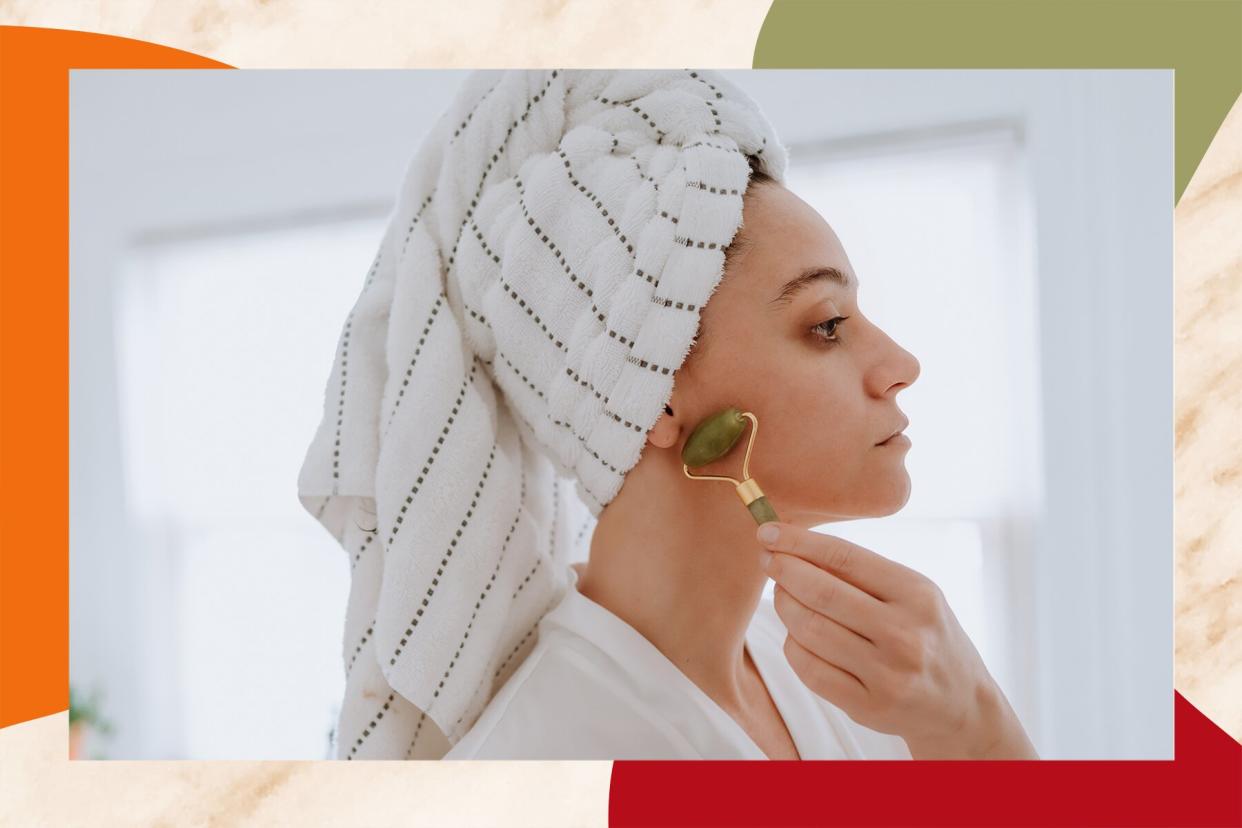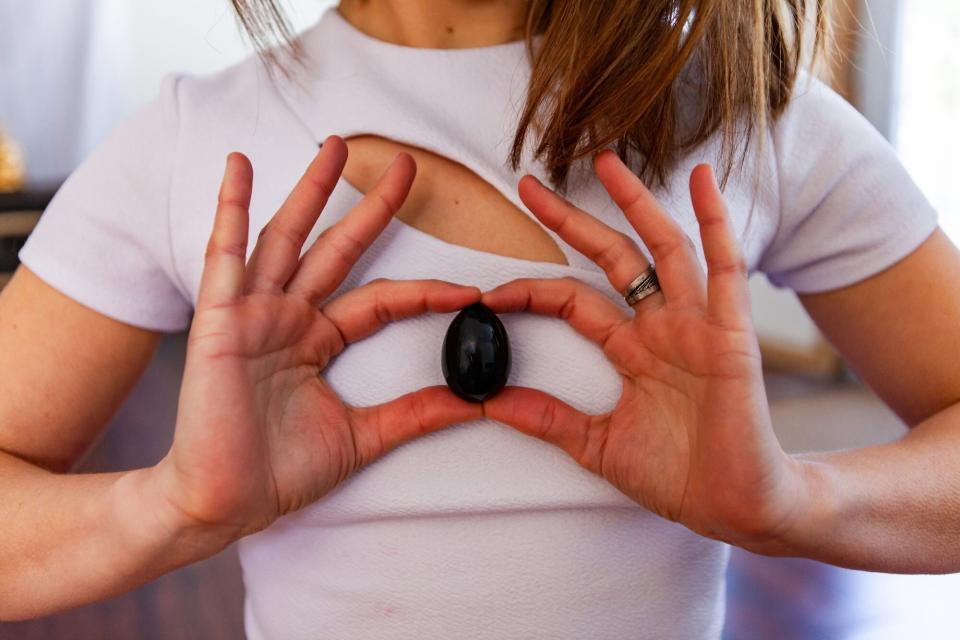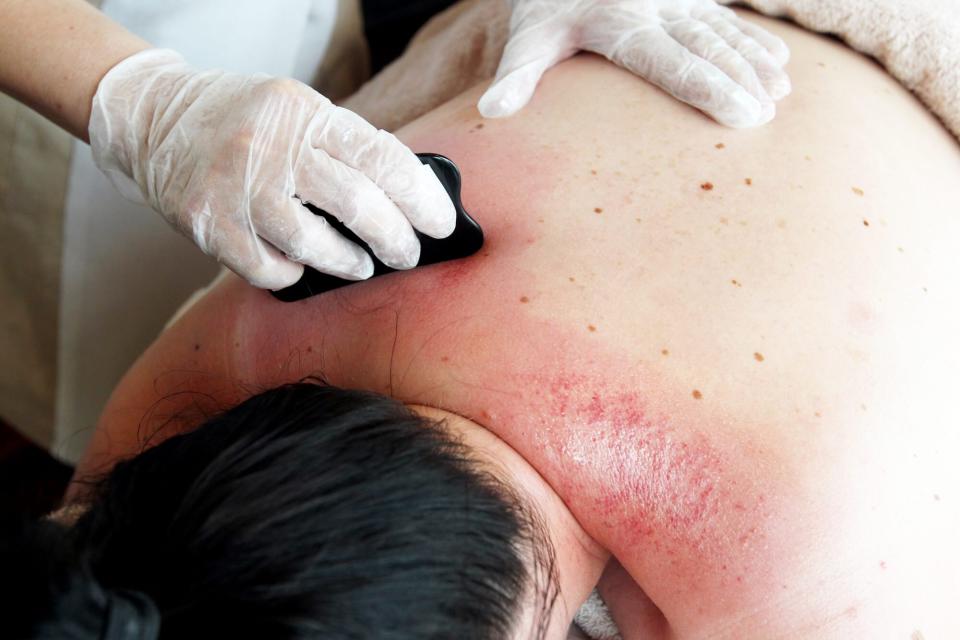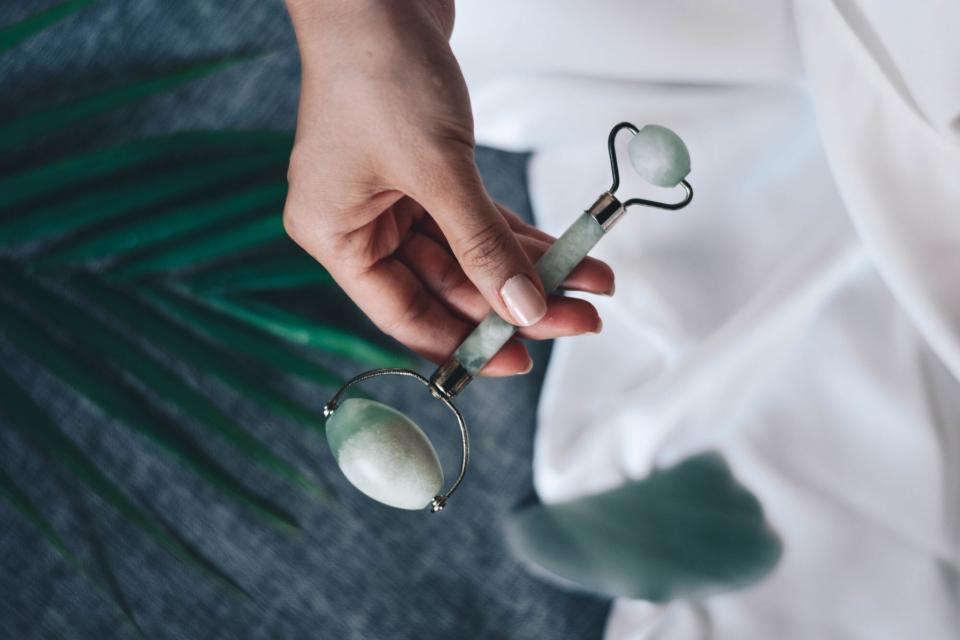Here's What the Beauty and Wellness Industries Get Wrong About Jade

Getty Images
When it comes to jade being inserted into Western beauty consciousness, the egg most definitely came first. In 2017, Gwyneth Paltrow introduced the vagina jade egg (aka yoni egg) to Goop readers, claiming it was used by ancient Chinese royalty to enhance sexual health. Lots of people bought into it, but others were rightly skeptical.
A study published in the Journal of Female Pelvic Medicine and Reconstructive Surgery explored the egg's validity, with researchers combing through Chinese art and archeology databases for any evidence to back up Paltrow's claim. In the end, they found nothing. Soon a lawsuit followed and Goop was forced to pay $145,000 in civil penalties for "making unscientific claims about vaginal eggs."
However, that didn't stop the beauty and wellness industry from using jade as the poster child for natural self-care tools. Almost overnight, it was everywhere. Jade rollers, which are face-sculpting tools that use jade, became a mainstay in every IG beauty shelfie and the industry started appropriating more from Asian practices by suddenly preaching Gua Sha skin benefits. The infamous egg is even still available for purchase on Goop (sans those debunked claims).

Getty Images
Jade, a mineral rock that has been around since 4000 B.C., is a significant stone in Chinese history and culture. According to crystal and Feng Shui teacher and coach Susan M. Chu, it represents fortune, good luck, and protection. For Feng Shui purposes, you can wear jade as jewelry (like a bangle or necklace) for luck and protection or place a jade stone in areas of your home (like by the front door to welcome in good fortune or in your office to promote career advancement and luck).
In The Compendium of Materia Medica by Li Shizen, jade is described as possessing natural healing powers to nourish and calm the spirit and benefit the heart and lungs. And in Traditional Chinese Medicine (TCM), it's considered an ultimate precious healing stone. While Chu says there's technically no wrong way to use jade, especially in Feng Shui, she does add that most jade products sold for western purposes are usually not of high quality, have been dyed, or are man-made. Real jade, she says, should change color over time.
Buzzwords such as "healing properties" and "ancient medicine" are often advertised with jade with no real clarification of what that actually means for the skin and overall health. Take something like Gua Sha, for example, which is defined as "scraping to get rid of (Gua) stagnated toxins in the body (Sha)." Ping Zhang, a licensed acupuncturist and a TCM practitioner with a Ph.D. in Oriental Medicine, explains that this method was used by farmers working in rice fields thousands of years ago to help release toxic heat from the body and prevent heatstroke. TCM doctors would document their own experiences using the same methods to release different toxic stagnations, with the first recorded use of Gua Sha under TCM guiding principles going as far back as 700 years ago during the Yuan dynasty.

Edmond So, Getty Images
Over the years, Gua Sha evolved to help with about 400 different body conditions, such as relieving muscle and joint pain. To perform the technique, a tool is needed to massage against the skin to push the toxins out, and nowadays, many U.S. consumers believe they're doing it with a roller.
However, most jade rollers aren't even made of real jade. Using one without understanding and applying TCM techniques is not true Gua Sha. Gua Sha requires an understanding of TCM principles, such as knowing point and energy theory, TCM channel, and TCM pathologies, per Zhang. There is no back and forth massage motion like people may see on Instagram; it only requires one direction depending on the flow channel, which only someone skilled in TCM can find.

Unsplash
"I found some of the explanations of Gua Sha in the market now promoting jade Gua Sha tools as a 'healing stone' for everybody—it is not," she says. "Just like acupuncture may not be for everybody, Gua Sha has its cautions and contraindications that need to be followed for practitioners."
As for any jade egg that claims to help with cleaning or improving sexual health, it's best to stay far away from it. "The vagina is self-cleaning," says Dr. Lauren Demosthenes, OBGYN and senior medical director with Babyscripts. "No products or douches are necessary. No scented deodorant—nothing."
Plus, inserting yoni eggs doesn't work the same way as doing Kegels. While Kegels can help with stronger orgasms and a stronger grasp during sex, putting an egg inside the vagina would cause your pelvic floor muscles to grip the egg in continuous contractions that could lead to pelvic floor muscle tension. This can cause problems like painful intercourse, pelvic pain, muscle spasms, and constipation.
However, the beauty and wellness industry's fascination with jade—or any spiritual and mysticism practice for that matter—doesn't seem to be slowing down. A 2017 Pew research survey found that more adults each year are turning away from traditional religion and going toward spirituality instead. Even more, reports show that crystals will soon outsell diamonds in years to come. "[There's an] attractiveness to eastern ancient medicine and commercialization without understanding the core," says Zhang. "[But] traditional Chinese Medicine is not meant to be piecemeal."

